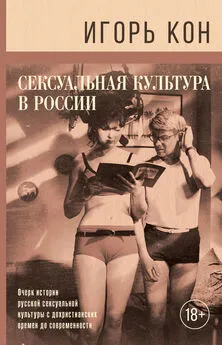Игорь Кон - Мальчик – отец мужчины
- Название:Мальчик – отец мужчины
- Автор:
- Жанр:
- Издательство:Время
- Год:2009
- Город:Москва
- ISBN:978-5-9691-0469-3
- Рейтинг:
- Избранное:Добавить в избранное
-
Отзывы:
-
Ваша оценка:
Игорь Кон - Мальчик – отец мужчины краткое содержание
Новая работа Игоря Кона развивает идеи, изложенные в его бестселлере «Мужчина в меняющемся мире». В конце XX в. человечество неожиданно обнаружило, что самым слабым звеном современного воспитания являются мальчики: они больше болеют, хуже учатся, чаще совершают преступления и рискованные поступки. Какова природа мальчишества как социокультурного явления? От чего зависят присущие или приписываемые мальчикам свойства? Всегда ли они одинаковы? Каково реальное положение мальчика в современной семье, школе и социуме? Каким он видит себя и свое тело? Как формируются и реализуются мальчишеские представления о мужественности? Каково приходится мальчикам, которые не могут или не хотят соответствовать предлагаемому нормативному канону? В каком направлении развивается современная гендерная педагогика? Обобщая данные мировых междисциплинарных исследований, ученый не дает педагогических рецептов, но его книга необходима каждому, кто готов думать над этими вопросами.
Мальчик – отец мужчины - читать онлайн бесплатно ознакомительный отрывок
Интервал:
Закладка:
Chick G., Loy J. W. Making men of them: Male socialization for warfare and combative sports // World Cultures. 2001. Vol. 12. P. 2–17.
Child Trends Data Bank-Learning Disabilities, 2004 // www. childtrendsdatabank.org/pdf/65_pdf.
Chirkov V. I., Ryan R M. Parent and teacher autonomy-support in Russian and US adolescents: Common effect on well-being and academic notivation // Journal of Cross-Cultural Psychology. 2001. Vol. 32. P. 618–635.
Chombart de Lauwe M. -J. Un Monde Autre: L' Enfance. De ses representations a son mythe. Payot, 1974.
Cigarette Use Among High School Students – United States, 1991–2005 //JAMA. 2008. № 300(11). P. 1292–1293.
Cillessen A. H. N., Mayeux L. From censure to reinforcement: Developmental changes in the association between aggression and social status // Child Development. 2004. Vol. 75. P. 147–163.
Cleveland H. H., Udry J. R., Chantala K. Environmental and genetic influences on sex-typed behaviors and attitudes of male and female adolescents // Personality and Social Psychology Bulletin. 2001. Vol. 27. P. 1587–1598.
Coates J. M. Gurnell M., Rustichini A. Second-to-fourth digit ratio predicts success among high-frequency financial traders // PNAS published online before print January 12, 2009, doi:10. 1073/pnas. 0810907106.
Cohen M. 'A habit of healthy idleness': boys' underachieve-ment in historical perspective // Failing Boys? Issues in Gender and Achievement / D. Epstein, J. Elwood, V. Hey, J. Maw (Eds.). Buckingham: Open University Press, 1998. P. 19–34.
Coleman J. Relationships in Adolescence. London: Roudedge, 1974.
Coleman J. M., Herzberg J., Morris M. Identity in adolescence: Present and future self-concepts / Journal of Youth and Adolescence. 1977. Vol. 6. P. 63–75.
Collins W. A., Steinberg L. Adolescent development in interpersonal context // Handbook of child psychology. Vol. 3. New York: Wiley, 2006. P. 1003–1067.
Connell R. Foreword // Where the Boys Are: Masculinity, Sport, and Education / Ed. by С Hickey, L. Fitzclarence, R. Mathews. Geelong: Deakin University, 1998.
Corbett C, Hill C, St. Rose A. Where the Girls Are: The Facts About Gender Equity in Education // AAUW Educational Foundation, 2008.
Cota-Robles S., Neiss M., Rowe D. C. The role of puberty in violent and nonviolent delinquency among Anglo American, Mexican American, and African American boys // Journal of Adolescent Research. 2002. Vol. 17. P. 364–376.
CrickN. R., Grotpeter J. K. Relational aggression, gender, and social-psychological adjustment // Child Development. 1995. Vol. 66. P. 710–722.
Cross T. L., NeumeisterK. L. S., CassadyJ. С Psychological types of academically gifted adolescents // Gifted Child Quarterly.
2007. Vol. 51. P. 285–294.
Cross T. L., CassadyJ. C, Dixon F. A., Adams С. М. The psychology of gifted adolescents as measured by the MMPI-A // Gifted Child Quarterly. 2008. Vol. 52. P. 326–340.
CurzanA. Gender Shifts in the History of English. Cambridge: Cambridge University Press, 2003.
Cushman P. So what exactly do you want? What principals mean when they say 'male role model' // Gender and Education.2008. Vol. 20. P. 123–136.
Cyranowski J. M., Frank E., Young E., Shear K. Adolescent onset of the gender difference in lifetime rates of major depression //Archives of General Psychiatry. 2000. Vol. 57. P. 21–27.
Deary I. J., Thorpe G., Wilson V et al. Population sex differences in IQ at age 11: the Scottish mental survey 1932 // Intelligence. 2003. Vol. 31. P. 533–542.
Deslandes P. R. Competitive examinations and the culture of masculinity in Oxbridge undergraduate life, 1850–1920 // History of Education Quarterly. 2002. Vol. 42. P. 544–578.
Development of Sex Differences / Ed. by E. E. Maccoby. Stanford University Press, 1966.
Diamond-Smith N., Luke N., McGarvey S. 'Too many girls, too much dowry': son preference and daughter aversion in rural Tamil Nadu, India //Culture, Health amp; Sexuality. 2008. Vol. 10. P. 697–708.
Dindia K., Allen M. Sex differences in self-disclosure: A metaanalysis // Psychological Bulletin. 1992. Vol. 112. P. 106–124.
Dixson A. F., Halliwell G., East R. et al. Masculine soma-totype and hirsuteness as determinants of sexual attractiveness to women // Archives of Sexual Behavior. 2003. Vol. 32. P. 29–39.
Dodge K. A., Coie J. D., Lynam D. Aggression and antisocial behavior in youth // Handbook of Child Psychology. Vol. 3. NY: Wiley, 2006. P. 719–788.
Dowd M. X-celling Over Men. March 20, 2005 http://www. nytimes. com/2005/03/20/opinion/20dowd. html
Downey L. A., Mountstephen J., Lloyd J. et al. Emotional intelligence and scholastic achievement in Australian adolescents // Australian Journal of Psychology. 2007. Vol. 60. P. 10–17.
Drevenstedt G. L., Crimmins E. M., Vasunilashorn S, Finch С. Е. The rise and fall of excess male infant mortality // PNAS. 2008. Vol. 105. P. 5016–5021.
Drinking patterns and their gender differences in Europe 2006 // Alcohol and Alcoholism. Vol. 41. Supplement 1. October 2006. P. 18–118.
2007 Annual report on the state of the drugs problem in Europe. EMCDDA. Lisbon. November 2007.
Drudy S. Gender balance/gender bias: the teaching profession and the impact of feminisation // Gender and Education. 2008. Vol. 20. P. 309–323.
Duerr H. P. Der Mythos von Zivilization prozess. B-de 1–4. Frankfurt: Suhrkamp, 1988–1999.
Dwairy M., Achoui M., Abouserie R., Farah A. Adolescent – family connectedness among Arabs: A second cross-regional research study // Journal of Cross-cultural Psychology. 2006. Vol. 37. P. 1–14.
Dweck C. S. The development of ability conceptions // Development of Achievement Motivation / A. Wigfield, J. Eccles (Eds.). San Diego: Academic Press, 2002. P. 57–88.
EaglyA. H., Chrvala C. Sex differences in conformity: Status and gender role interpretations // Psychology of Women Quarterly. 1986. Vol. 20. P. 203–220. Education at a Glance: OECD Indicators 2005 Paris: OECD, 2005; www. oecd. org
Eisenberg M. E., Resnick M. D. Suicidality among gay, lesbian and bisexual youth: The role of protective factors // The Journal of Adolescent Health. 2006. Vol. 39. P. 662–668.
Eisenberg N., Fabes R. A., Spinrad T. L. Prosocial Development // Handbook of Child Psychology. 6-th ed. Vol. 3. NY: Wiley, 2006. Vol. 3. P. 646–718.
Eisenberg N., Morris A. S. Moral cognitions and prosocial responding in adolescence // Handbook of Adolescent Psychology. NY: Wiley, 2004. P. 152–188.
Ember C. R. Feminine task assignment and the social behavior of boys // Ethos. 1973. Vol. I. P. 424–439.
Ember C. R. A Cross-cultural perspective on sex differences // Handbook of Cross-Cultural Human Development / Ed. by R. H. Munroe, R. L. Munroe, B. B. Whiting. N.Y: Garland, 1981. P. 531–580.
Endresen I. M., Olweus D. Participation in power sports and antisocial involvement in preadolescent and adolescent boys // Journal of Child Psychology and Psychiatry. 2005. Vol. 46. P. 468–478.
Farrington D. P. Adolescent violence: Findings and implications from the Cambridge Study // Violent Children and Adolescents: Asking the Questions / G. Boswell, ed. L.: Whurt, 2000. P. 19–35.
Farrington D. P. Conduct disorder, aggression, and delinquency // Handbook of Adolescent Psychology. Second ed. / Ed. by R. M. Lerner, L. Steinberg. NY: Wiley, 2004. P. 626–664.
Faulkner G. E. J., Adlaf E., Irving H. M. et al. The relationship between vigorous physical activity and juvenile delinquency: A mediating role for self-esteem? // Journal of Behavioral Medicine. 2007. Vol. 30. P. 155–163.
Feldman S. S., Rosenthal D. A., Brown N. L., Canning R. D. Predicting sexual experience in adolescent boys from peer acceptance and rejection during childhood // Journal of Research in Adolescence. 1995. Vol. 5. P. 387–412.
Fendlich S., Fuchs-Rechlin K., Pothmann J., Schilling M. Ohne Manner? Verteilung der Geschlechter in der Kinder– und Jugendhilfe // DJI Bulletin 75 (2/2006). S. 22–27.
Fessler D. M. Т., Pillworth E. G., Flamson T. Angry men and disgusted women: An evolutionary approach to the influence of emotions on risk-taking // Organizational Behavior and Human Decision Processes. 2004. Vol. 95. P. 107–123.
Fisher A. H., Rodriguez Mosquera P. M. et al. Gender and culture differences in emotion // Emotion. 2004. Vol. 4. P. 87–94.
Flood M. The men's bibliography: a comprehensive bibliography of writing on men, masculinities and sexualities, compiled by Michael Flood. 16th edition, 2007. Home URL: http://mensbib-lio. xyonline. net/
Fridell S. R., Owen-Anderson A., Johnson L. L. et al. The playmate and play style preferences structured interview: A comparison of children with gender identity disorder and controls // Archives of Sexual Behavior. 2006. Vol. 35. № 6. P. 729–738.
Frome P. M., Eccles J. S. Parents' influence on children's achievement-related perceptions // Journal of Personality and Social Psychology. 1998. Vol. 74. P. 435–452.
Frost J., McKelvie S. Self-esteem and body satisfaction in male and female elementary school, high school, and university students // Sex Roles. 2004. Vol. 51. P. 45–54.
Furnham A., Calnan A. Eating disturbance, self-esteem, reasons for exercising and body weight dissatisfaction in adolescent males // European Eating Disorders Review. 1998. Vol. 6. P. 58–72.
Galambos N. L. Gender and gender role development in adolescence // Handbook of Adolescent Psychology. Second ed. / Ed. by R. M. Lerner. Steinberg NY: Wiley, 2004. P. 233–262.
Galanaki E. Are children able to distinguish among the concepts of aloneness, loneliness, and solitude? // International Journal of Behavioral Development. 2004. Vol. 28. P. 435–443.
Galsworthy M., DionneG., Dale P. S., PlominR. Sex differences in the etiology of early verbal and non-verbal development // Developmental Science. 2000. Vol. 3. P. 206–215.
Gathorne-Hardy J. The Public School Phenomenon, 597– 1977. L.: Hodder and Stoughton, 1977.
Ge X., Rand D., Conger R. D., Elder G. H. Jr. The relation between puberty and psychological distress in adolescent boys // Journal of Research on Adolescence. 2001. Vol. 11, P. 49–70.
Geary D. C. Male, Female: The Evolution of Human Sex Differences. Washignton DC: American Psychological Association, 1998.
Geary D. C. Byrd-Craven J., Hoard M. K. et al. Evolution and development of boys' social behavior / Developmental Review. 2003. Vol. 23. P. 444–470.
GeertzK. Available Light. Princeton Univ. Press, 2000.
GershoffE. T. Corporal punishment by parents and associated child behaviors and experiences: A meta-analytic and theoretical review // Psychological Bulletin. 2002. Vol. 128. P. 539–579.
Gershon J. A meta-analytic review of gender differences in ADHD // Journal of Attention Disorders. 2002. Vol. 5. P. 143–154.
Gibson I. The English vice: Beating, sex and shame in Victorian England and after. Duckworth, 1978.
GiddensA. Modernity and self identity: Self and society in the late-modern age. Cambridge: Polity Press, 1991.
Gill R., Henwood K., McLean C. Body projects and the regulation of normative masculinity // Body amp; Society. 2005. Vol. 11. P. 37–62.
Читать дальшеИнтервал:
Закладка:










